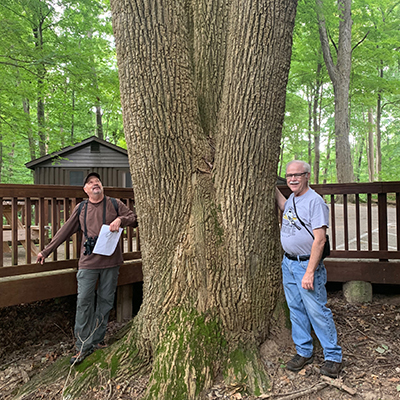I was saddened during a recent trip to McCormick’s Creek State Park to learn that the March 31st tornado had claimed another victim of which I was not aware. Winds associated with the tornado also destroyed a giant, 53“ diameter ash tree in the family cabin area. This tree was one of the largest ash trees treated by IPA as part of our program for protecting a remnant population from emerald ash borer (EAB).
The tree was immediately adjacent to one of the cabins. Falling limbs severely damaged that cabin and one other nearby cabin. Fortunately, another 30” diameter ash tree in the area was undamaged by the storm.

Twenty-four ash trees in McCormick’s Creek were treated in 2021 by IPA as part of our treatment program, and scheduled to be treated again in 2024. Most were in the Wolf Cave Nature Preserve. This preserve is adjacent to the campground, and was also severely damaged by the tornado. While public access to Wolf Cave has not been restored yet, due to the continued existence of hazard trees next to the hiking trails, it is believed that most of these ash trees were also lost. Of the 24 treated in 2024, it is likely that only about 6-8 remain.
While the first thought would be that our efforts to save these giant ash trees were largely in vain, that is not truly the case. The goals of the program were to save some of the giant ash trees for the enjoyment of future generations, and to provide seed sources for the next generation of ash trees. A short distance from the cut stump of the cabin ash tree, next to the newly built Sunset Cabin, numerous young ash trees can be seen growing. While we don’t have access to the Wolf Cave area, we can be assured that the same thing can be seen throughout the damaged area there as well. In McCormick’s Creek, that transition to the next generation just came quicker than we expected.
(Note: Donations to IPA’s continuing efforts to save the remaining large ash trees can be made at our website, indianaparksalliance.org.)
